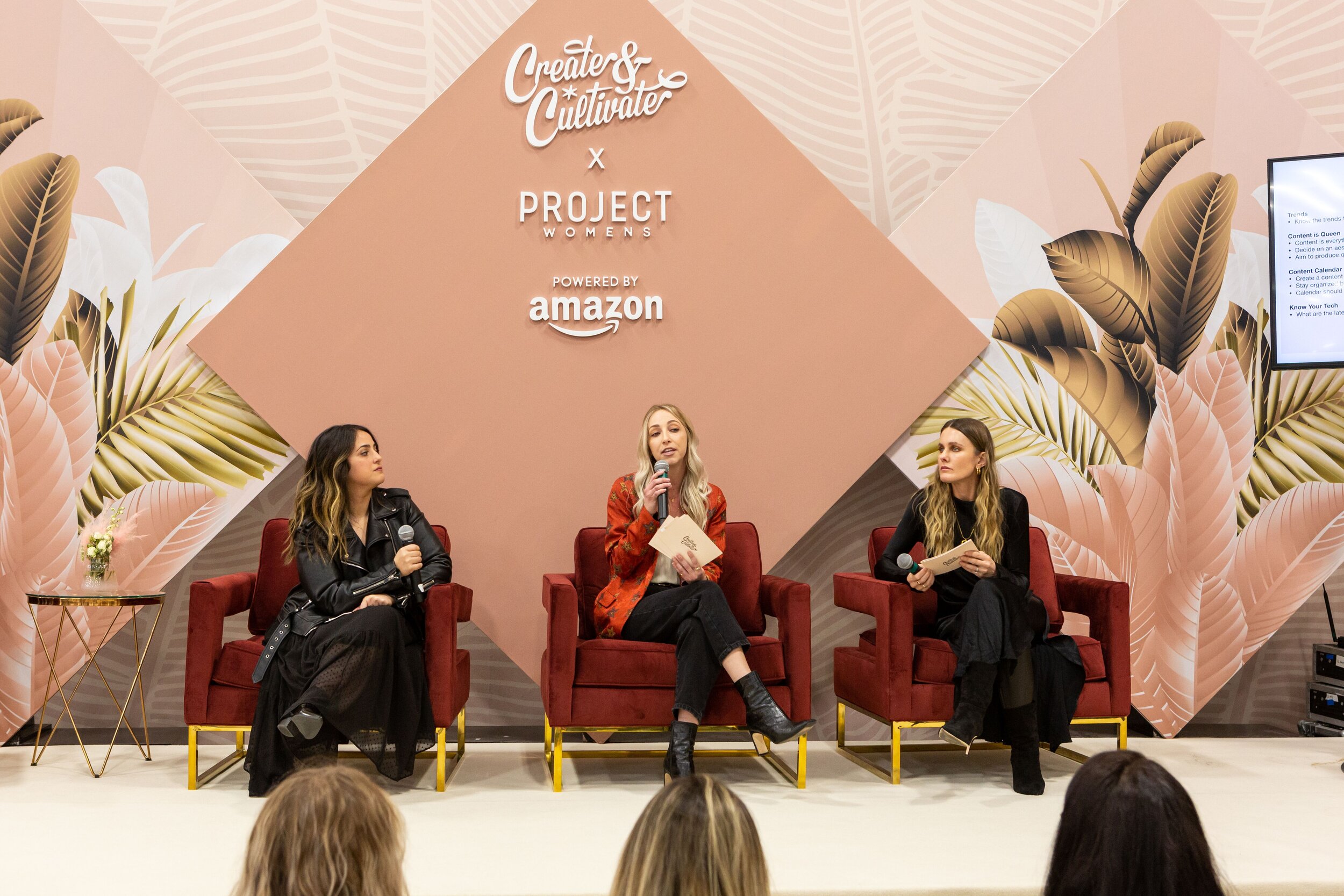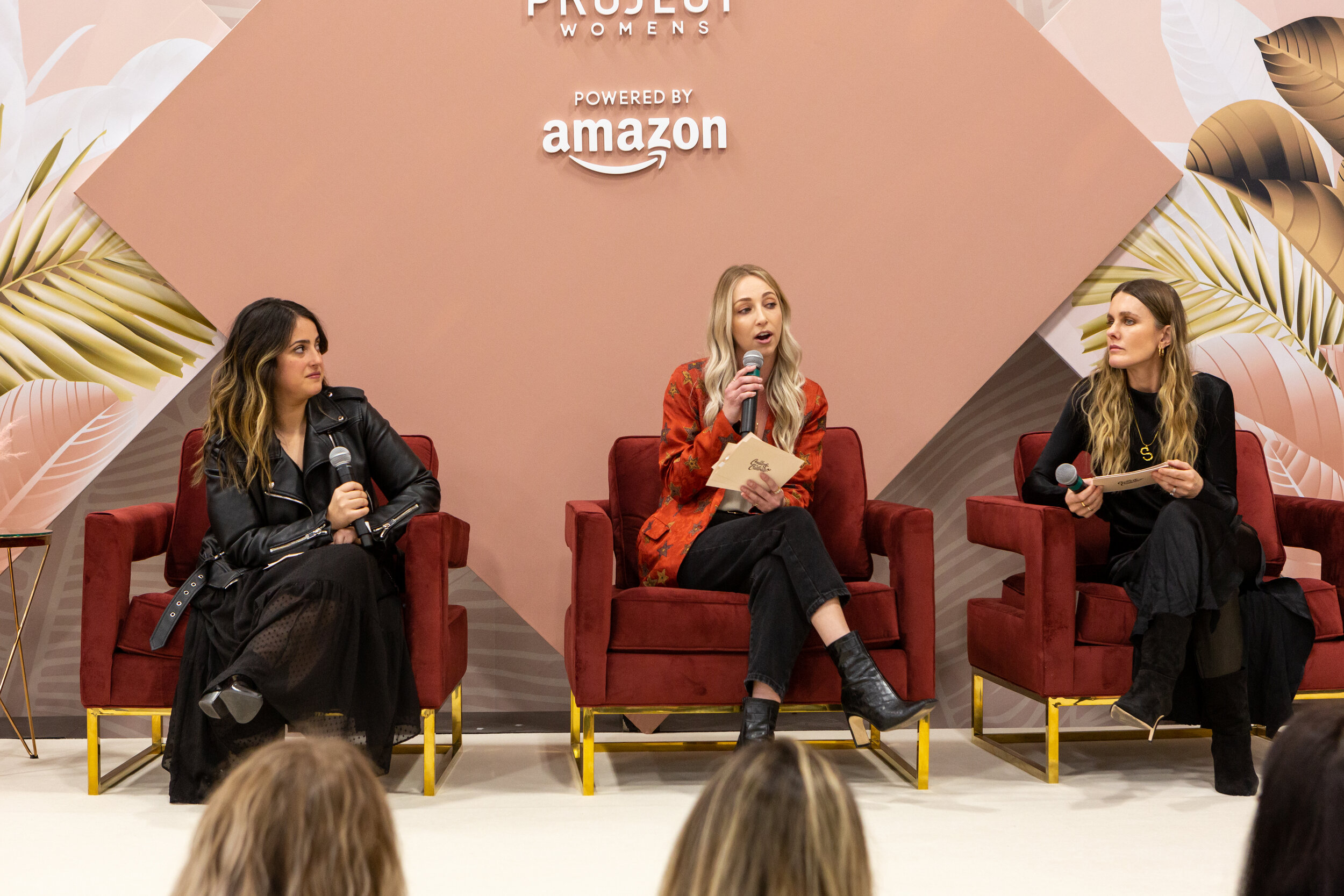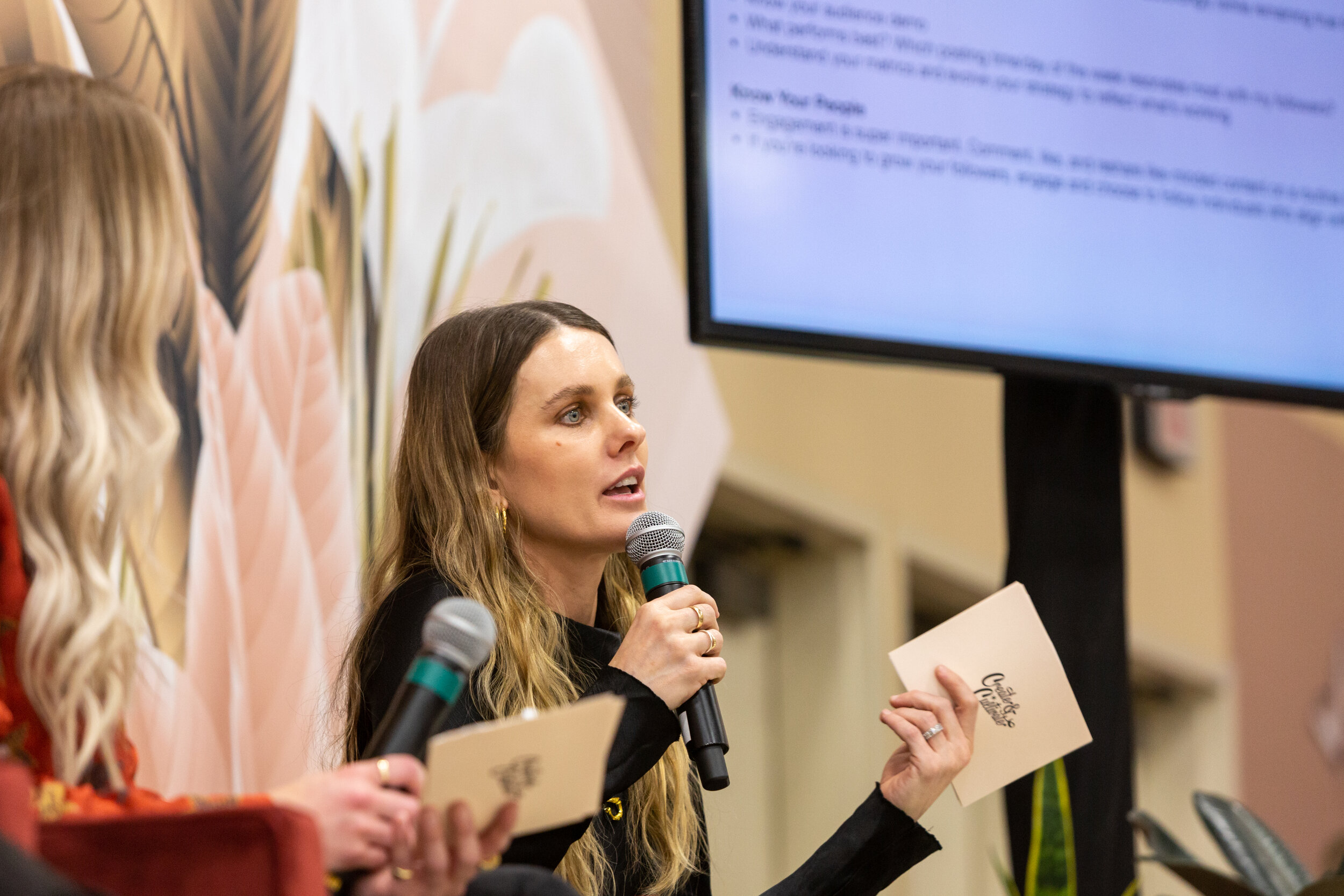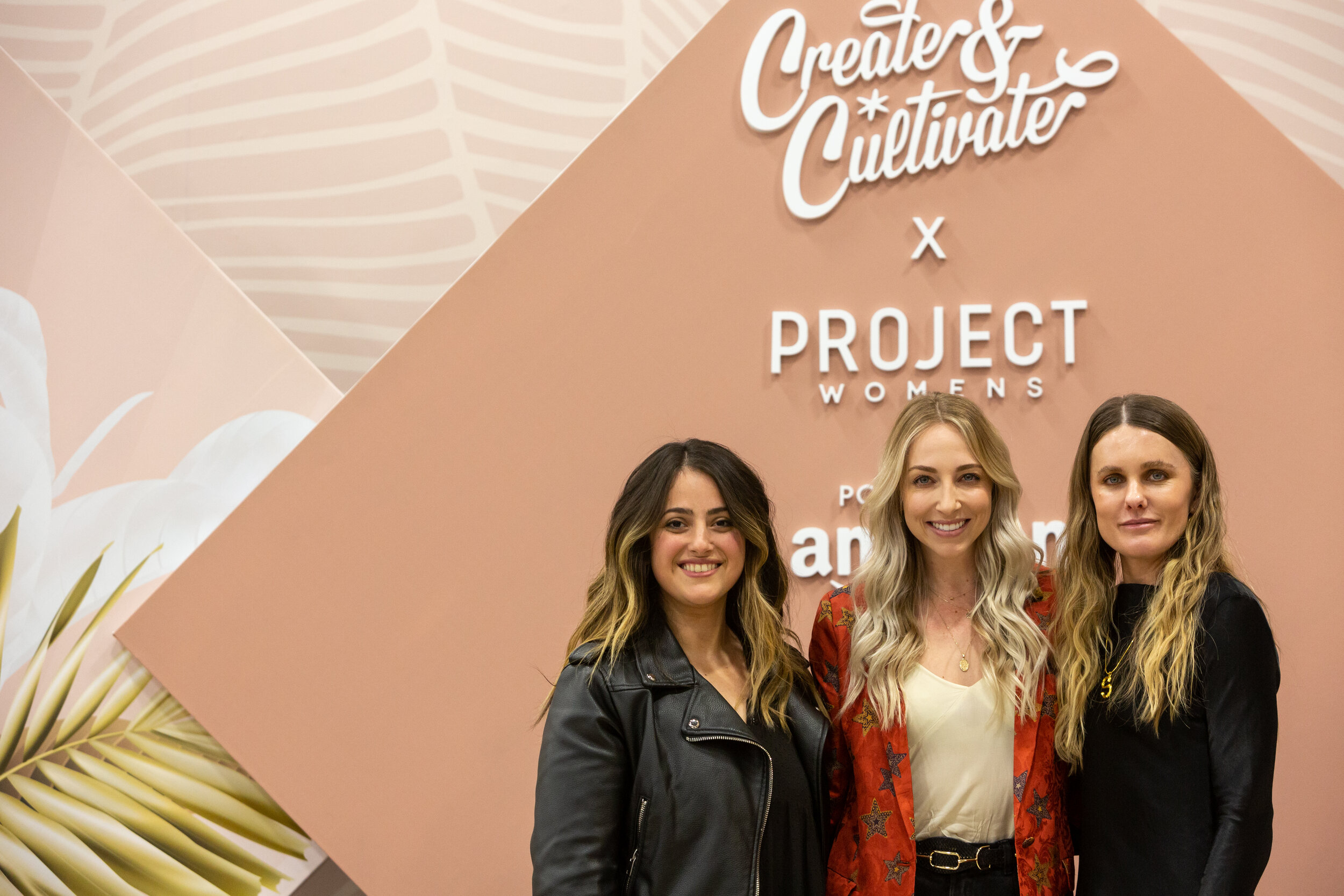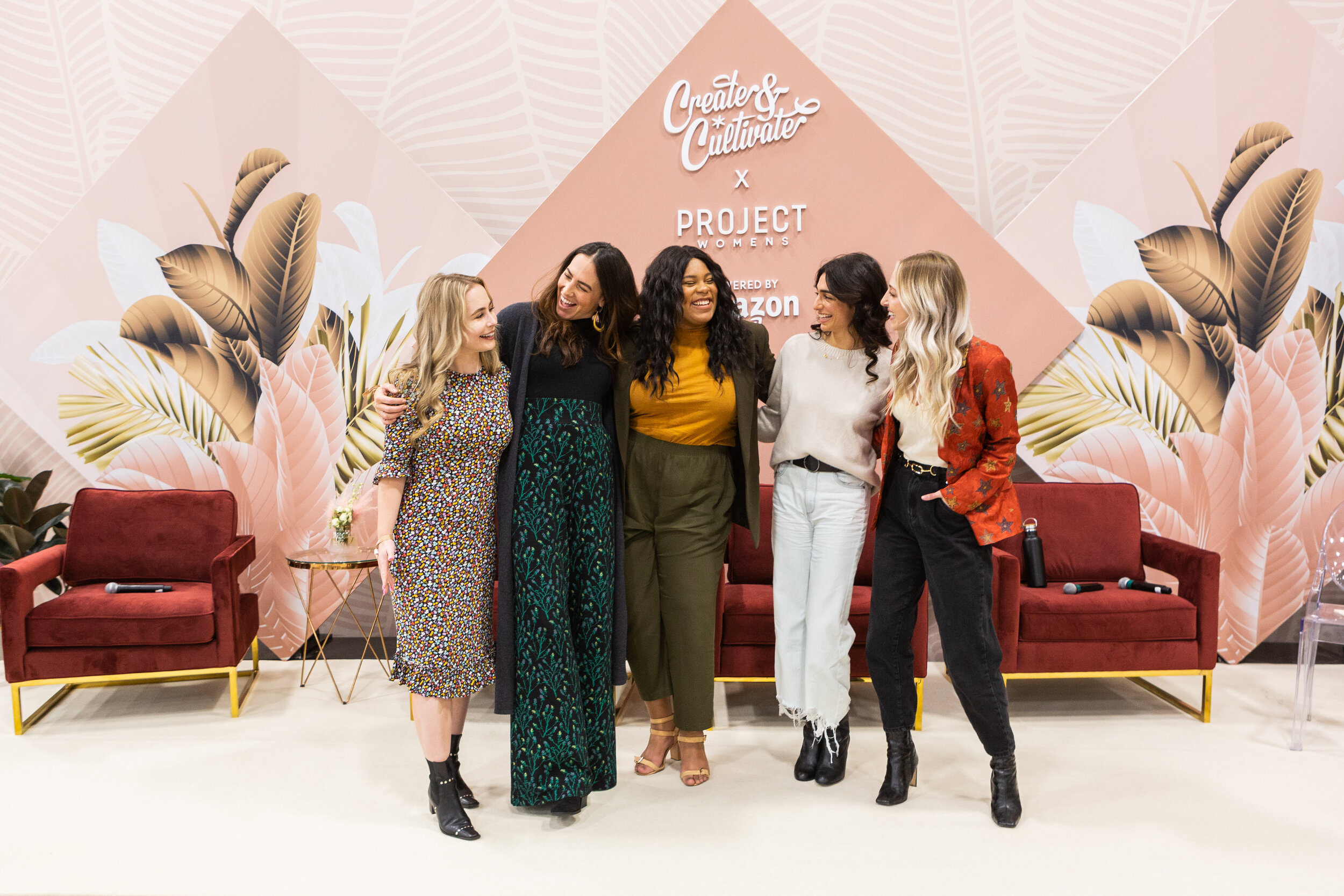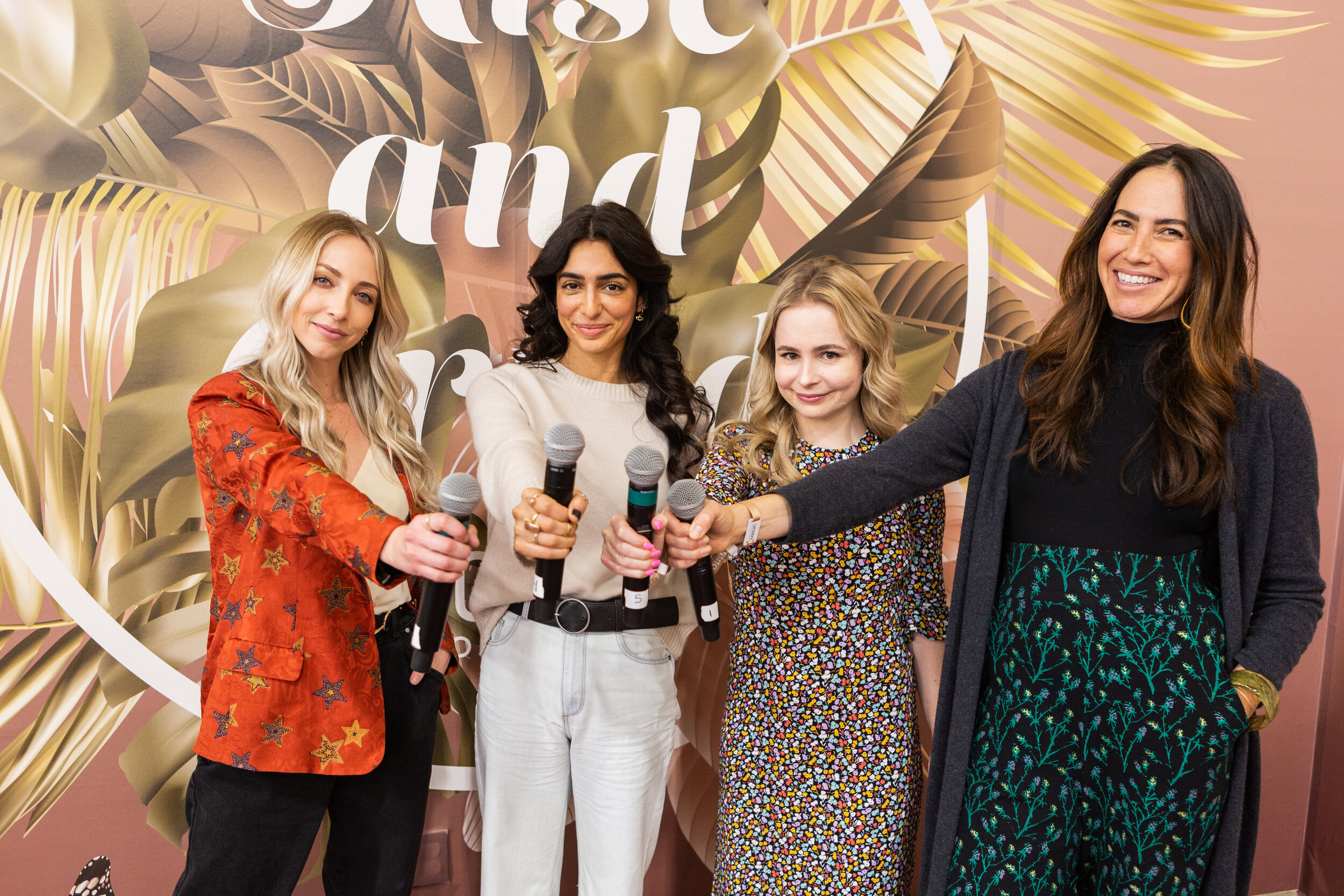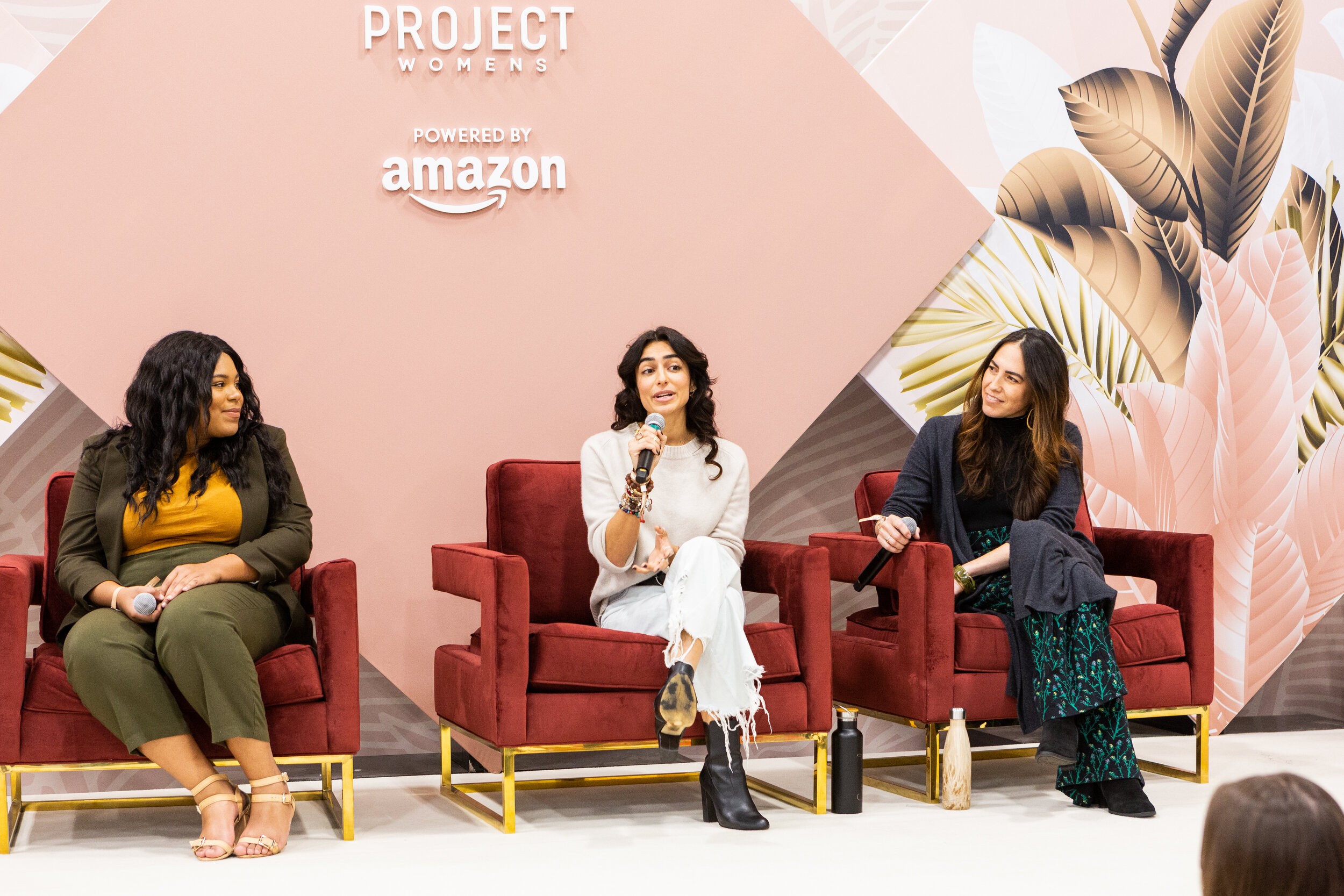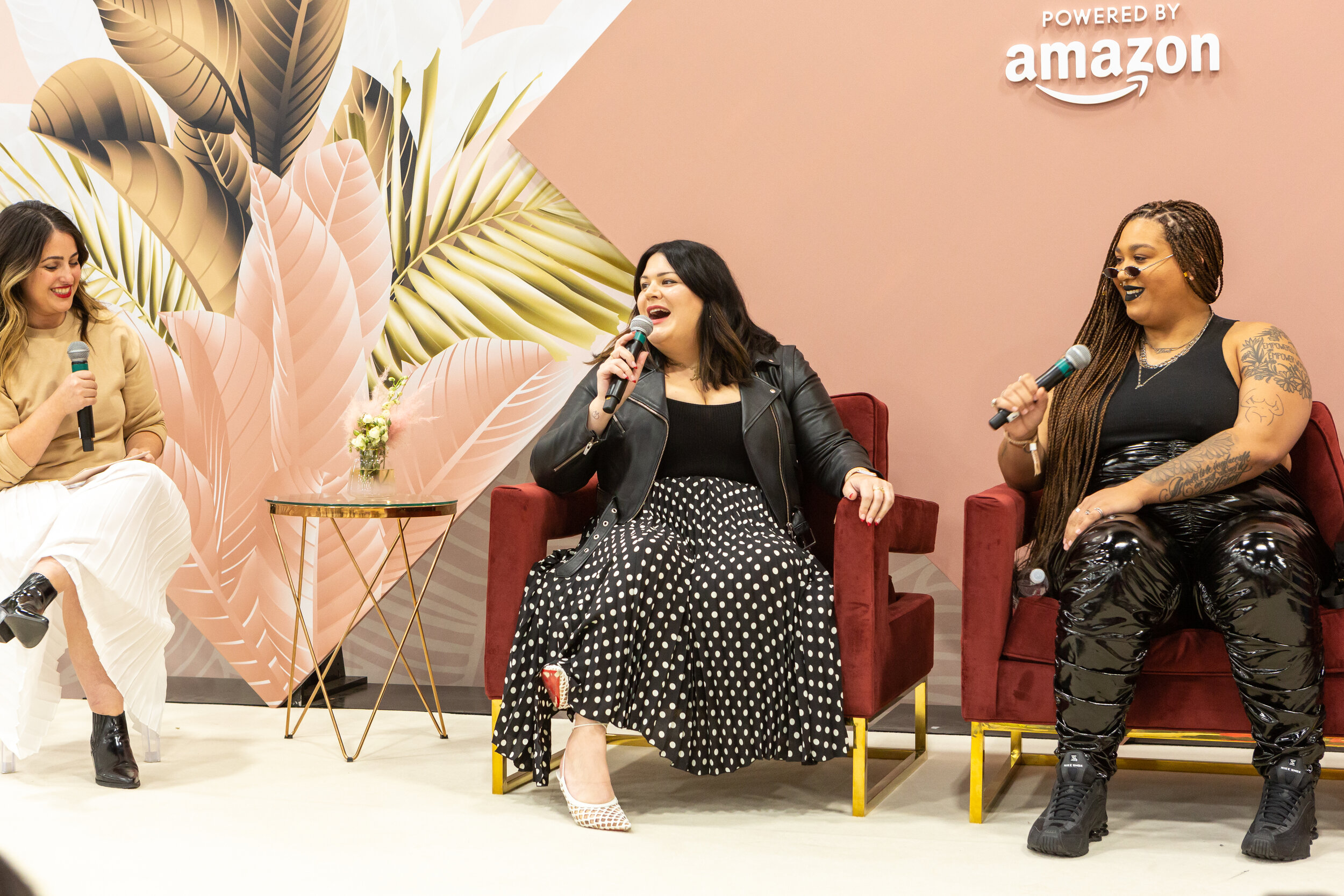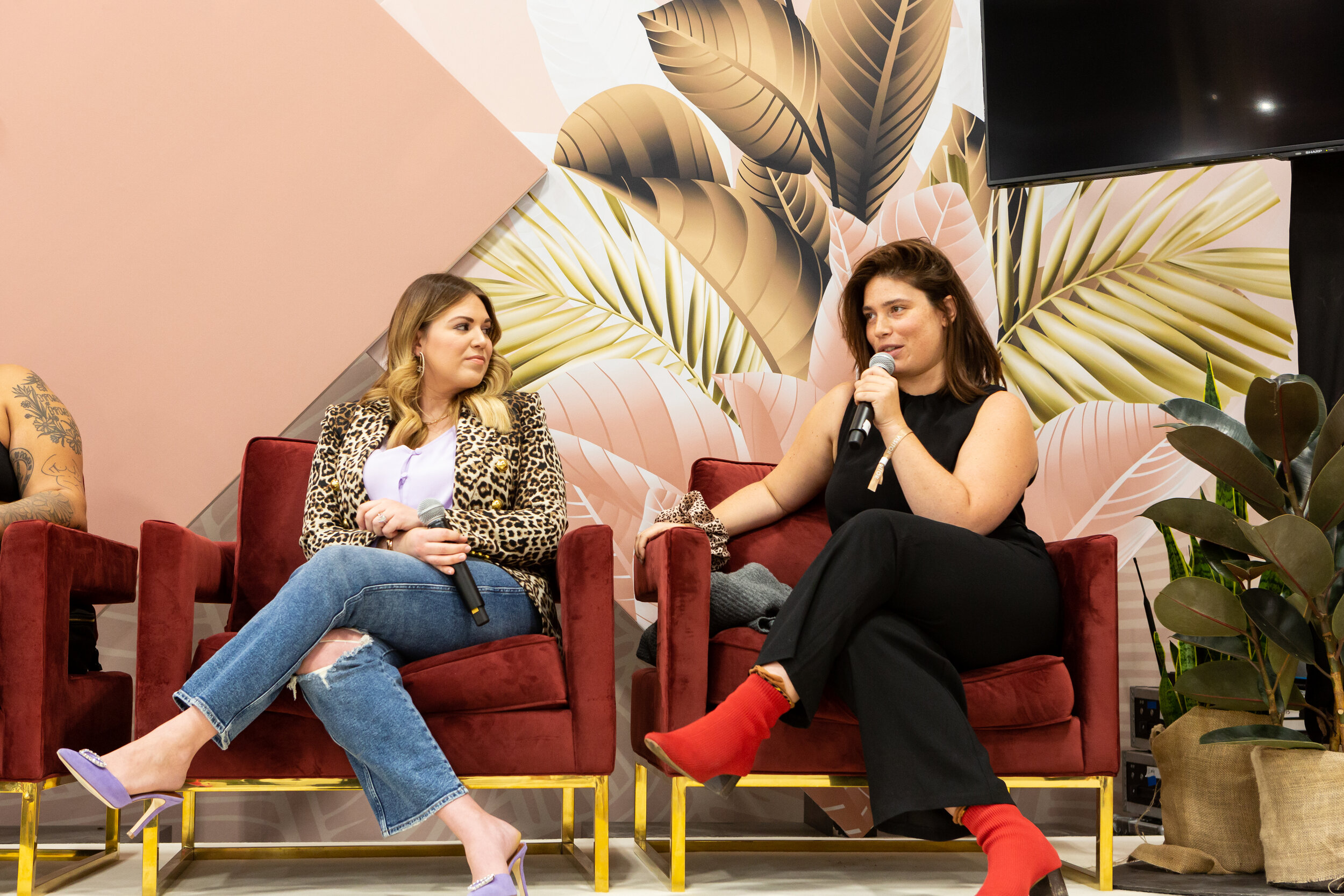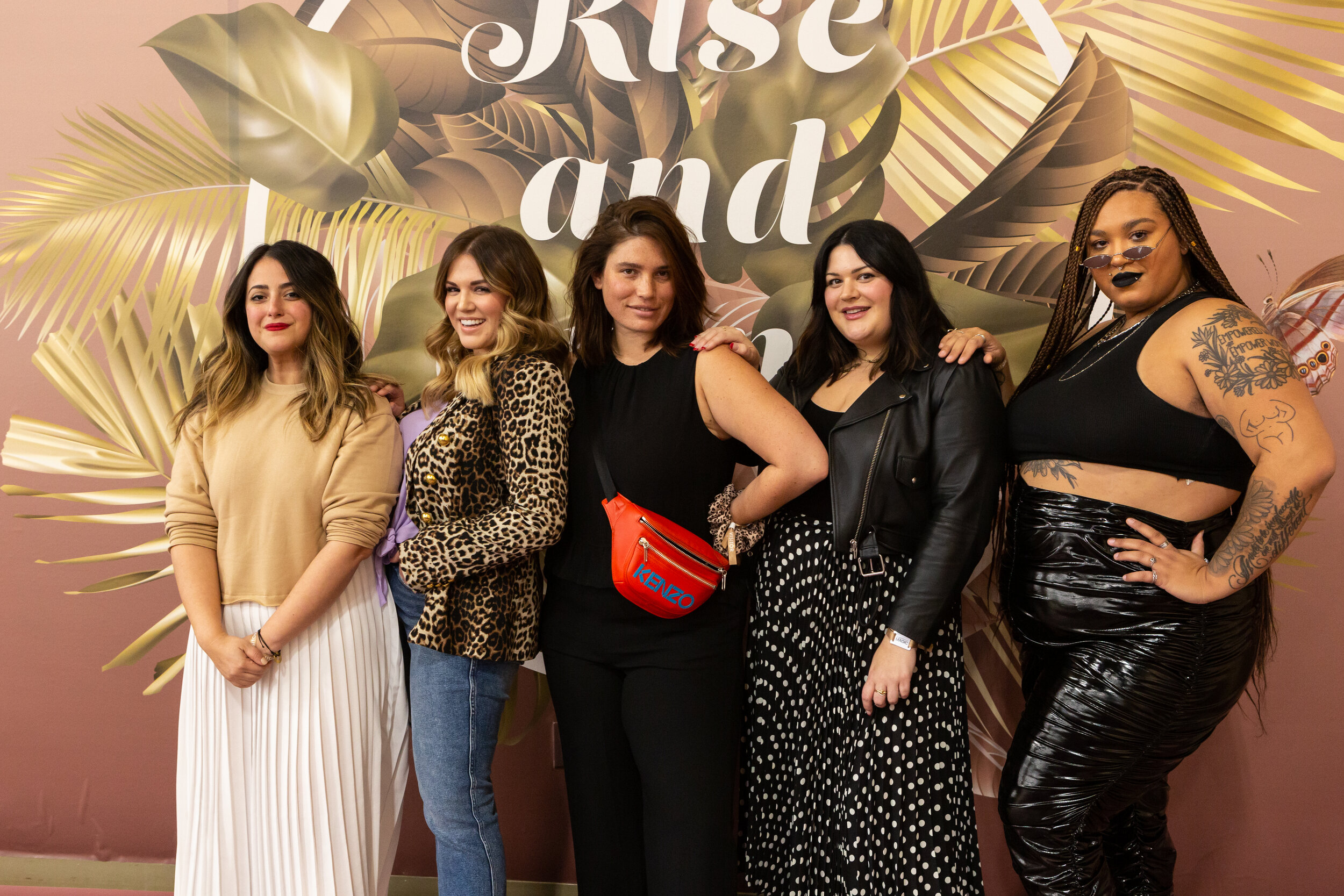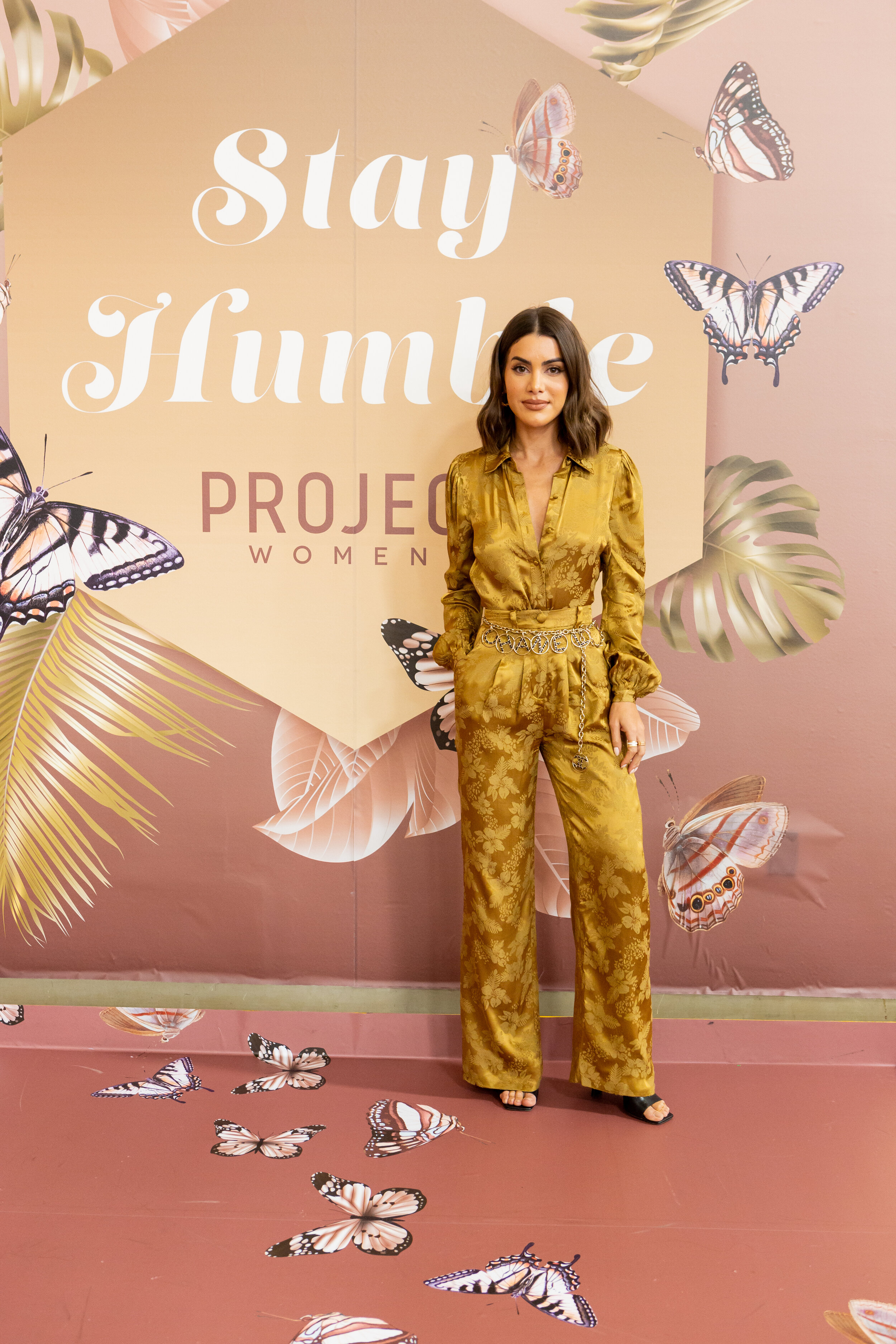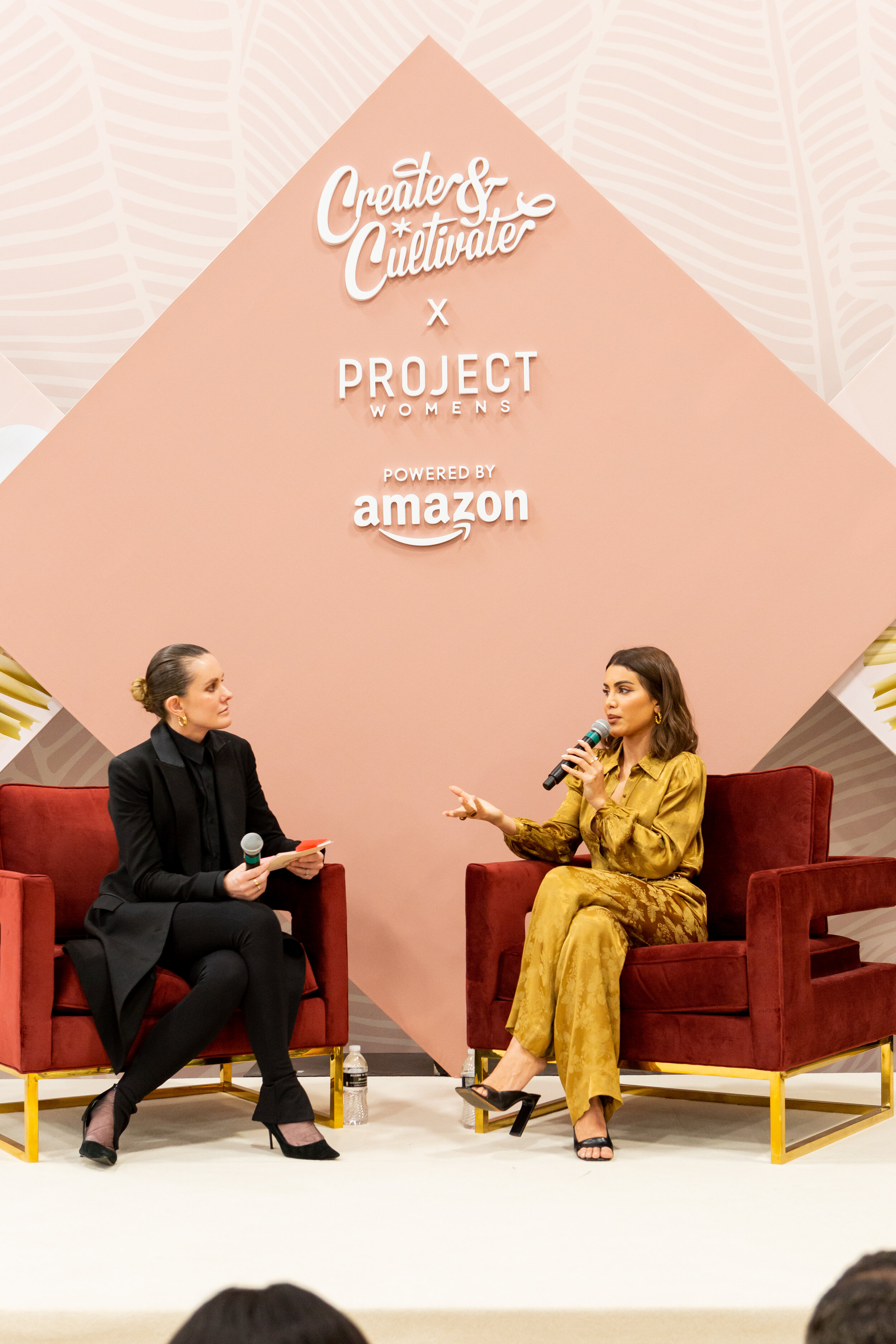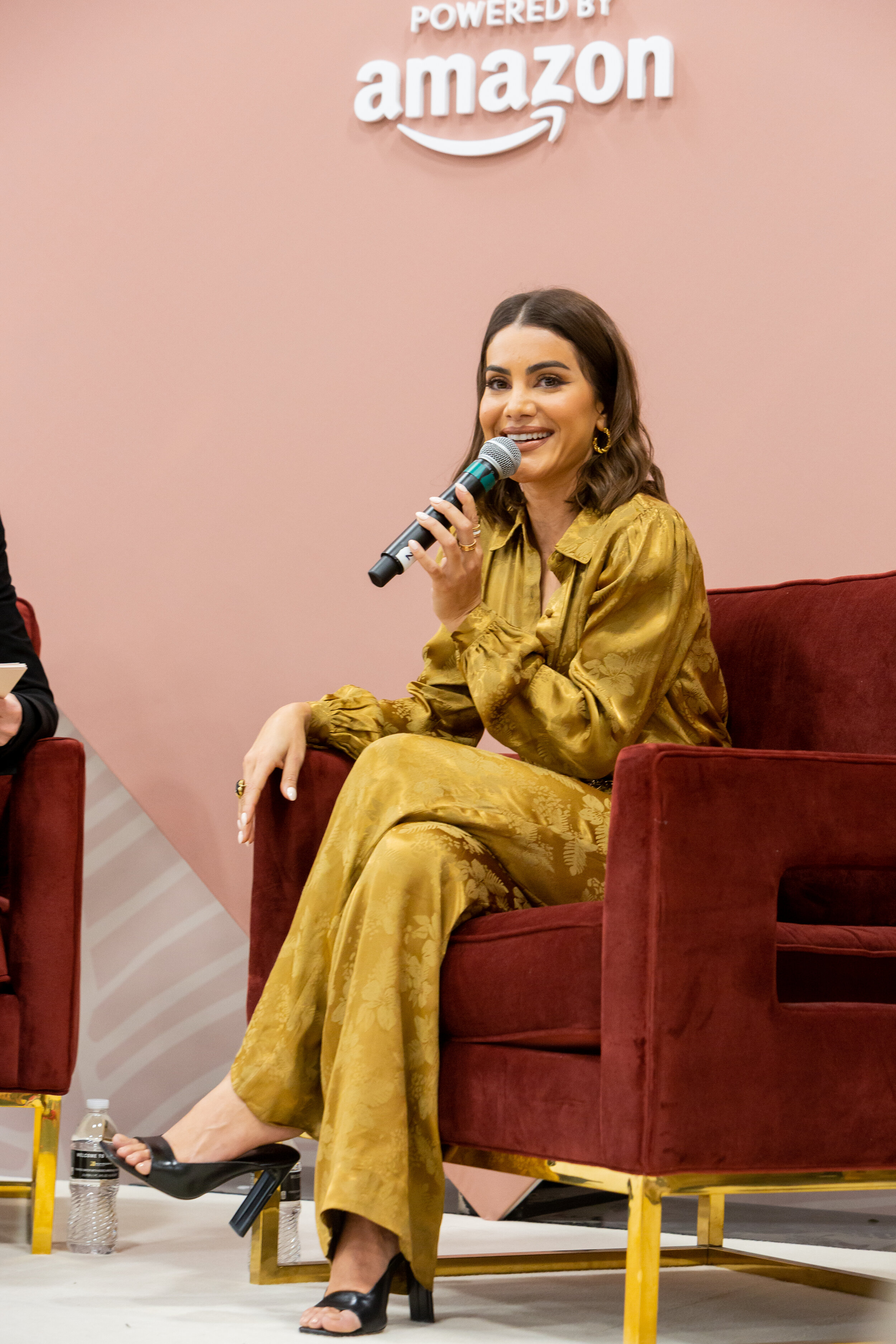“Don’t Be Scared to Fail—Failure Is a Part of Life" and Other Empowering Quotes From C&C's PROJECT WOMENS' Event
In paid partnership with PROJECT WOMENS.
Photo: Courtesy of Create & Cultivate
We’ve all felt the transformative power of fashion. Whether it’s wearing a power suit to that important meeting or finding the perfect dress for your best friend’s wedding, what we wear has a huge impact on how we feel.
This has seen a huge demand for clothing and shoes in recent years. In fact, the global apparel market is projected to grow in value from 1.3 trillion U.S. dollars in 2015 to about 1.5 trillion dollars this year. But the question is, how are we evolving the industry to stay ahead of the curve and not just in terms of trends but the business of fashion from the manufacturing to marketing?
We joined forces with the country’s largest fashion trade show, PROJECT WOMENS to ask those questions and more. Held twice a year, MAGIC is filled with rows upon rows of fashionable booths filled with the next season’s must-have clothing and trends before they hit the boutiques. Project Women’s is one of the events held within the show and we were thrilled to partner with them this August to host four eye-opening panels with boundary-pushing founders and leaders in the space.
Read on to learn more from our panelists including how to generate online buzz around your brand, what it takes to be sustainable (and profitable), why the inclusivity movement is more than just good marketing; and how Camila Coehlo turned her Instagram followers into buyers.
Workshop title—The Buzz Kit: How to Generate Online Buzz Around Your Brand
Nairi Najarian, Senior Director, Digital Marketing
“Establishing your brand identity is the first step.”
“A true marketing campaign is more than just an advertisement. A campaign is a series of marketing-related activities that work to support a predetermined goal. And your goals are two things: defining or reinforcing your brand and lead that into conversions.”
“When you’re bringing your campaign to life it’s important to have your target customer at the forefront of things.”
“Don’t try to emulate another brand’s business or campaign or identity.”
“At the end of the day, your brand belongs to the customer.”
“A negative review is also a good review because people are talking to you.”
Carly Johnson, Senior Director, Brand Marketing
“Instagram is very, very saturated so the first thing to identify is where is there a white space. How will you be able to stand out so that people will continue to follow you and engage with you.”
“As a general rule of thumb, we like to do one paid content post for every three or four organic posts in your feed.”
“People really do appreciate transparency, so when you pair up with another brand, explain to them why.”
“To build an organic following you need to clean up your account and get rid of the fluff.”
“Know the trends that are making the rounds on Instagram and make them a part of your strategy.”
“Instagram is constantly changing its algorithm, so you need to understand what kinds of content that the algorithm is looking for. Currently, that algorithm is looking for what’s trendy.”
Sacha Strebe, Editorial Director
“Don’t be intimidated by there being so much saturation in the space because you can find your own point of view and differentiate yourself.”
“You can try to beat the algorithm by engaging—commenting, liking, and sharing. It creates almost a subculture of conversation and community within a post.”
“The first priority of a pitch is to grab their attention.”
“Don’t write clickbait. Keep it simple.”
“Tailor your pitch. Don’t send everyone the same thing. Think about who you’re writing it to.”
“Editors are people too, so tap into that human element.”
“Pitch yourself. Have a bio at the bottom of each pitch and tap into that personal element.”
“Double-check everything. It is super critical to avoid even the smallest spelling errors. This is for an editor; they write for a living.”
Want this presentation in your inbox? Enter your details at the below address to get the free Buzz Kit Download HERE.
Why going green will get you in the black—How sustainability is good for the planet and your bottom line
Karen Housel, Sustainable fashion and lifestyle blogger, Sustainable Daisy
“I had an ‘ah-ha"‘ moment one day when I was looking at my closet and realized that about 80% had been worn by someone before me.”
“It can be difficult to implement all these layers of sustainability. When you’re first getting into the movement it can almost seem very impossible to achieve. It takes time.”
“Just because something is old, or has been worn before, doesn’t mean it’s any less than something brand new.”
“Ask yourself, who made my clothes? That really enforces accountability.”
Deb Shepherd, Founder, Clothed in Abundance
“The more I was getting into debt (and the more ashamed I was getting of my shopping) the more I realized, why am I doing this? What am I trying to prove? I really had to look inward and see what is this façade I am trying to create and why does this matter?”
“I started thinking why don’t I become more intentional about things and how I’m spending my money which got me into thrifting. It got me thinking about the impact when I buy a $20 dress: who’s making that and are they having a livable wage within a safe work environment and ethical conditions?”
“When you’re starting out, the easiest thing you can do is to wear what you already have in your wardrobe, getting things repaired or even exchanging with friends.”
“I try to shop slowly, and think do I really want this piece? Then I will save up for it slowly.”
“I look for brands that align with my values and that I can afford.”
Valeria Hinojosa, Sustainable and Eco-Friendly Influencer
“I wanted to be a better human and be more connected. I literally Googled ‘how to be a better human being.’ I started researching and seeing all these things about sustainability. That’s what allowed me to transform my connection with nature with my lifestyle.”
“Sustainability makes you a better person and a happier person.”
“Here are three tips that actually helped me tremendously: The first one is we’re in a society that is used to consuming and then throwing away, that is what we need to avoid. We produce four pounds of waste on a daily basis and that is not biodegradable, so just having that in mind. Second, whenever something breaks have it fixed. Third, vegan leather is not sustainable, and silk is not cruelty-free. Reading labels is crucial.”
“Before you start your business, sustainability has to be in the core and heart and soul of your company.”
“It doesn't matter how sustainable a product is when it comes in plastic packaging.”
“Of course we all want to make money, but at the same time sustainability, community, respect, compassion need to be deeply rooted in the mission of everything you do.”
“The most important thing is to realize your power as consumers.”
“If brands see that the money is sustainability, they will start going green.”
“If you see that a brand is using too much plastic, send an email. They actually listen and they want to become better. Stop being a robot who buys things wears them and throws them away and start asking questions.” Valeria
Whitney Leigh Morris, Creator, Tiny Canal Cottage
“Reading more and learning more about the climate crisis gave me no other choice but to go down this path. You can’t learn about what’s going on and not give a shit if you’re human.”
“I ask myself a checklist of questions before I buy anything. And it’s amazing, depending on what you have in your checklist, how few items make the cut. If you actually hold to your standards there’s not a lot you can buy. When you ask was it ethically produced, were the materials sustainably sourced, and what is going to happen to it when I’m done with it, the decisions will be made for you.”
Let’s Represent: Why the inclusivity movement is more than just good marketing
Nicolette Mason, Designer, Fashion Writer, and Creative Consultant
“I don’t have a problem with the word plus size, I think it’s necessary as industry language, that means something for sizing. I have a problem when it is used as a qualifier or a way to tokenize people.”
“What we have to shift, is our associations with the term plus-size and take away the stigma.”
“If you want to get around language; if you don’t want to say plus-size or curve or you’re afraid of offending people, employ people like us who truly represent the size range and demographic you’re trying to reach and make it part of the visual language.”
“Make sure that within brands and the people making decisions that there is diversity represented there. It’s not enough to have diversity in marketing; your office and place of work need to be diverse.”
“We have to think really critically around issues of privilege and access and who is given opportunities. When I was in school it was a given that we would all take unpaid internships in fashion, which isn’t realistic for most students trying to support themselves. So getting rid of unpaid internships entirely so people outside economic privilege can get relevant experiences in their field and taking chances on people who might not have relevant experience and trusting their vision and investing in their growth is key. Also looking outside our immediate networks for applicants.”
“Hire from the people who are engaging with your brand already.”
“About 68% of women in America wear a size 14 or larger but 17% of the product offering is available in plus-sizes. That 68% of women are desperate to shop and are looking for brands. But it’s not enough to just offer inclusive sizing and assume they will sell themselves. It is the responsibility of the brand to build trust and resonance and make awareness part of their mission. There must be a follow through with marketing.”
“Nobody wants to feel like the step-sister hidden in the other room—we want to be part of the conversation and front and center.”
“Something I’ve heard for years is that brands have to uphold this idea of what’s aspirational. I think it’s really time that we think about what this means. This idea that there is only one body type or one presentation or one look that people universally aspire to is actually really toxic and is really missing an opportunity.”
Jazzmyne Jay, Plus size content creator and body activist
“Before I do anything, including this panel, I ask right away am I the only plus-size person, am I the only black woman, am I the only anything? I’m not trying to be a token anymore.”
“You can teach people how to do things but you can’t teach people how to be passionate about something or how to stand up for your brand. Tap into those people you know already love you.”
Clementine Desseaux, model, and entrepreneur
“Plus-size models and straight-size models weren’t really modeling together so we decided to call on our friends and put together an all-women team and show the fashion industry that it is possible to put all those women together and still look good. Because people had always told us it didn’t look good and wasn’t ‘Vogue-worthy’. Then it debuted in Vogue and we proved it was ‘Vogue-worthy’.”
“A lot of brands are claiming they are diverse when they really arent, so it’s doing the extra work to see if it’s just their thing now or if it’s always been their thing and they’re really gonna follow through with inclusivity.”
“You don’t have to represent everyone at once. Throughout one campaign you can’t represent everyone but as you change and grow it’s about consistency and making sure as you go you’re pulling from pools of everyone out there.”
Sarah Tripp, Content Creator, and Founder, Sassy Red Lipstick
“Growing up we didn’t see people like us in the media, being dressed for shows or simply shopping in stores, or as a mannequin or online model. That’s why this is so important. We want ourselves and future generations to have the representation and to feel like they’re included and worthy and that they can look fabulous and amazing and dope.”
“We are demanding it now as consumers. You need to make our sizes and you need to include us.”
“Being authentic and real is best the way to create a community on social media. That’s it, that’s the secret.”
“This idea that this plus-size market isn’t shopping, they won’t buy, you won’t sell out, is so wrong. We want to buy from you, let us buy from you.”
“I really appreciate brands that take the time, the money, and the effort to show different models for one product online.”
Under the Influence: Why Camila Coehlo Built Her Community First and Her Business Followed
Camila Coelho, Brazilian-American fashion and beauty entrepreneur and founder of the hit Camila Coelho Collection
“In high school, I felt very different and I didn’t fit in. That affected me back then but also made me stronger.”
“My mom said, “Camilla, you will stand out by being different.” and that stuck with me.”
“I’ve always been super proud of my Brazillian heritage and I always wanted people to accept my culture.”
“The less production you do the better a video performs. People want more real-life and less edited content. All you need is an iPhone and good light.”
“One thing that really helped me, in the beginning, was that I was on every platform, even if I was sharing the same content on all of them. It is very important to be on everything. I just joined TikTok.”
“As long as you’re happy and having fun with social media, do it. If it’s stressing you out don’t.”
“I have never paid for any boosting. I’m really proud to say that I never have. I really believe in good content and it’s better to prioritize content rather than to pay for it.”
“The first and most important part of achieving our goals is to write it down, say it out loud, and look yourself in the mirror and say I am going to achieve this. You have to believe in what you’re saying. Our words have so much power, so much more than we think. You really have to believe in it.”
“As a brand, especially in the beginning, you have to listen to everyone, because you want your brand to be for everyone.”
“We can always grow by listening to our consumers.”
“If you’re doing something that you’re passionate about its going to be worth every second. You are going to be stressed but if you love what you do you will be thankful every day that you are doing it.”
“As a boss, I’ve learned how to express myself more. In the beginning, I had a hard time expressing myself especially things I wasn’t happy with. I think I’m a kind boss but now I know how to express myself without hurting someone’s feelings or being ignorant.”
“Don’t be scared to fail. Failure is part of our life. If you really are passionate, do it. It won’t be easy and you will have struggles but if you believe in something, do it.”
“I would say to myself in the early stages, don’t have FOMO or feel less than anyone else. With social media, you’re constantly seeing everyone doing everything and you’re feeling like you have to do what everyone else is doing. Focus on yourself more than other people. That’s a great way to be more unique and more creative.”
“The biggest sacrifice I’ve made for my career is giving up weekends and nights with my friends.”
“I feel the most fulfilled when I accomplish a goal.”
“My best life hack is to be positive even when everything is going wrong.”

